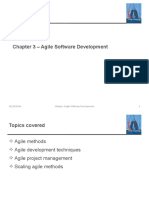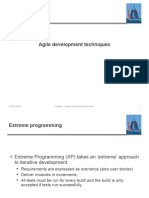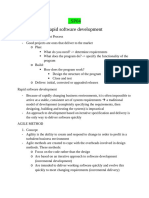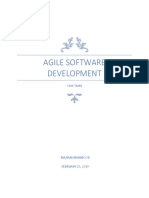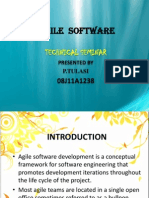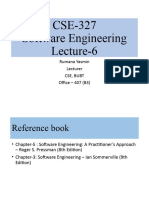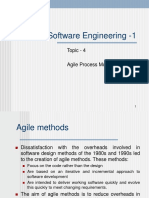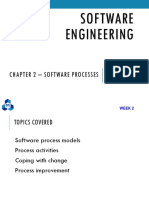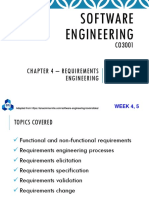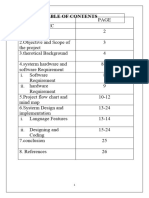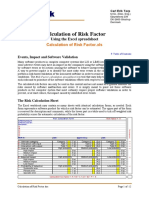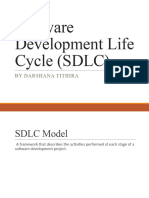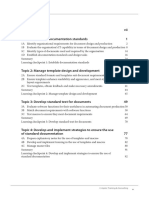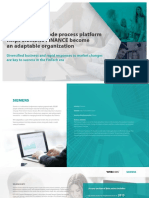0% found this document useful (0 votes)
181 views38 pages03 - Ch3 Agile Software Development
The document discusses agile software development techniques, including extreme programming (XP). It covers the principles of agile methods like incremental delivery, customer involvement, and responding to change. XP practices like test-first development, pair programming, and refactoring are explained. User stories are used to capture requirements in XP, with examples provided. The goal of agile techniques like XP is rapid and frequent delivery of working software that can easily evolve to meet changing needs.
Uploaded by
Hồ Văn HoàCopyright
© © All Rights Reserved
We take content rights seriously. If you suspect this is your content, claim it here.
Available Formats
Download as PDF, TXT or read online on Scribd
0% found this document useful (0 votes)
181 views38 pages03 - Ch3 Agile Software Development
The document discusses agile software development techniques, including extreme programming (XP). It covers the principles of agile methods like incremental delivery, customer involvement, and responding to change. XP practices like test-first development, pair programming, and refactoring are explained. User stories are used to capture requirements in XP, with examples provided. The goal of agile techniques like XP is rapid and frequent delivery of working software that can easily evolve to meet changing needs.
Uploaded by
Hồ Văn HoàCopyright
© © All Rights Reserved
We take content rights seriously. If you suspect this is your content, claim it here.
Available Formats
Download as PDF, TXT or read online on Scribd
/ 38












